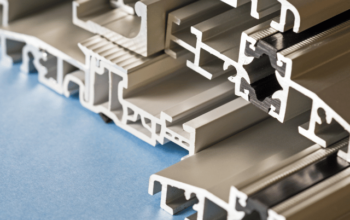With energy costs continuing to impact household budgets across the UK, choosing a home with lower energy bills has become a priority for many prospective tenants and buyers. The difference between an energy-efficient property and a poorly insulated one can mean hundreds of pounds in annual savings.
Whether you’re working with letting agents in St Albans or searching independently, knowing the key indicators of energy efficiency will empower you to identify properties that won’t leave you facing sky-high utility bills. Many of these features are visible during viewings, whilst others can be discovered through the right questions.
Understanding Energy Performance Certificates
The Energy Performance Certificate (EPC) serves as your first port of call when assessing a property’s energy efficiency. Every rental property and home for sale must display an EPC rating from A (most efficient) to G (least efficient), providing a standardised measure of energy performance. Properties rated C or above typically offer significantly lower running costs than those rated E or below.
Don’t simply glance at the overall rating – examine the detailed breakdown showing current performance versus potential improvements. The certificate highlights specific areas where energy is being lost and suggests cost-effective improvements.
The estimated annual energy costs shown on the EPC provide valuable budgeting information, though actual bills will vary based on your usage patterns. These figures offer reliable comparisons between different properties you’re considering.
Insulation and Building Fabric
Effective insulation represents the foundation of energy efficiency, keeping heat inside during winter and preventing overheating in summer. During property viewings, look for signs of quality insulation throughout the building fabric.
Cavity wall insulation is standard in properties built after 1983, but many older homes have been retrofitted. External signs include small drill holes (about 22mm diameter) filled with mortar on external walls. Internally, well-insulated walls feel warmer to touch and don’t exhibit cold spots.
Loft insulation should be clearly visible when accessing roof spaces, with modern standards requiring at least 270mm depth. Floor insulation varies depending on construction type – cold floors that feel uncomfortable underfoot often indicate poor insulation.
Windows and Glazing Systems
Windows significantly impact energy efficiency, with single glazing responsible for substantial heat loss in older properties. Double glazing, now standard in new builds, provides much better thermal performance, whilst triple glazing offers even greater efficiency.
Check window frames for signs of quality installation and maintenance. UPVC frames generally offer better thermal performance than older aluminium systems. Look for signs of failing sealed units in double glazing, including condensation between panes or visible deterioration of edge seals.
Heating Systems and Controls
Modern, efficient heating systems can dramatically reduce energy bills. Condensing boilers achieve efficiency ratings above 90%, whilst older systems typically operate at 70-80% efficiency.
Combination boilers provide both heating and hot water from a single unit, eliminating separate hot water cylinders and associated heat losses.
Smart heating controls allow precise temperature management through programmable thermostats, thermostatic radiator valves, and zoned heating systems.
Renewable Energy Systems
Solar panels generate electricity that can significantly reduce energy bills. Properties with solar installations may benefit from government incentive schemes.
Battery storage systems allow generated energy to be stored for use when panels aren’t generating, maximising renewable energy benefits.
Smart Technology and Monitoring
Smart meters provide real-time energy usage information, helping occupants understand and control their consumption. Properties with smart meters often indicate energy-conscious owners.
Home automation systems can optimise energy usage through intelligent scheduling and monitoring, including smart lighting systems and automated heating controls.
Questions to Ask During Viewings
Ask about recent utility bills to understand actual running costs, particularly during peak heating seasons. Enquire about any recent energy efficiency improvements and heating system maintenance history.
If the property includes appliances, check their energy ratings and approximate ages, as older appliances can consume significantly more energy than modern equivalents.
Conclusion
Choosing a home with lower energy bills requires careful evaluation of building fabric, heating systems, and energy features. By understanding what to look for and asking the right questions, you can identify properties that will keep your energy costs manageable whilst providing comfortable living conditions. The time invested in assessing energy efficiency during your property search will pay dividends through reduced utility bills.




